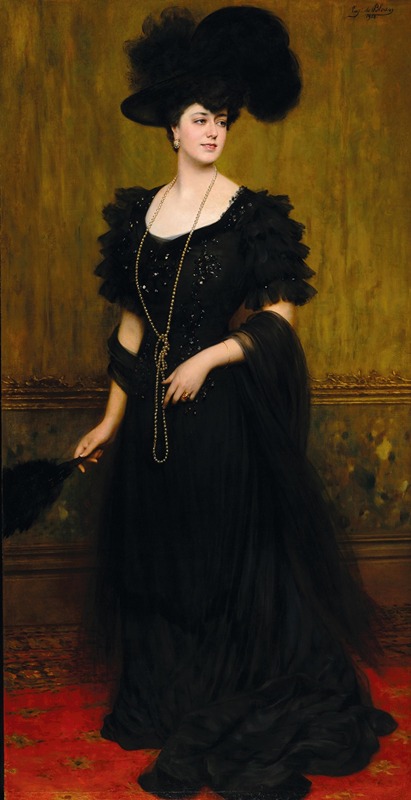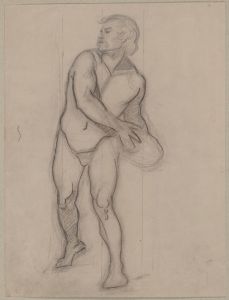
Portrait of Madame Lebreton
A hand-painted replica of Eugen von Blaas’s masterpiece Portrait of Madame Lebreton, meticulously crafted by professional artists to capture the true essence of the original. Each piece is created with museum-quality canvas and rare mineral pigments, carefully painted by experienced artists with delicate brushstrokes and rich, layered colors to perfectly recreate the texture of the original artwork. Unlike machine-printed reproductions, this hand-painted version brings the painting to life, infused with the artist’s emotions and skill in every stroke. Whether for personal collection or home decoration, it instantly elevates the artistic atmosphere of any space.
Eugen von Blaas, also known as Eugene de Blaas, was an Italian painter of Austrian descent, renowned for his academic style and detailed genre paintings. One of his notable works is the "Portrait of Madame Lebreton." While specific details about this particular painting are limited, it is representative of von Blaas's broader oeuvre, which often focused on capturing the elegance and charm of his subjects with meticulous attention to detail.
Eugen von Blaas was born on July 24, 1843, in Albano Laziale, near Rome, into an artistic family. His father, Karl von Blaas, was also a painter and played a significant role in his early artistic education. Eugen von Blaas studied at the Academy of Fine Arts in Venice, where he honed his skills and developed a style that would become characteristic of his work. He became known for his portraits and genre scenes, often depicting Venetian life and society with a keen eye for detail and a vibrant color palette.
The "Portrait of Madame Lebreton" exemplifies von Blaas's skill in portraiture, capturing the grace and poise of his subject. Although specific information about Madame Lebreton herself is not readily available, the painting likely reflects the social and cultural milieu of the time, as von Blaas often painted individuals from the upper echelons of society. His portraits are noted for their lifelike quality and the ability to convey the personality and status of the sitter.
Von Blaas's work is characterized by its academic precision and the influence of both Italian and Austrian artistic traditions. His paintings often feature smooth brushwork, a rich color palette, and a focus on the play of light and shadow to create depth and realism. In the "Portrait of Madame Lebreton," these elements would be expected to come together to present a vivid and engaging depiction of the subject.
Throughout his career, von Blaas exhibited widely, gaining recognition and acclaim for his work. He participated in exhibitions in cities such as Vienna, Munich, and Paris, where his paintings were well-received by both critics and the public. His ability to capture the essence of his subjects and the vibrancy of Venetian life made his work popular among collectors and art enthusiasts.
Eugen von Blaas continued to paint until his death on February 10, 1931, in Venice. His legacy is preserved through his numerous paintings, which remain in private collections and museums around the world. The "Portrait of Madame Lebreton," like many of his works, serves as a testament to his skill as a portraitist and his contribution to the genre of academic painting.
In summary, while specific details about the "Portrait of Madame Lebreton" are scarce, it is a part of Eugen von Blaas's broader body of work that showcases his mastery in capturing the elegance and character of his subjects. His paintings continue to be appreciated for their technical excellence and the insight they provide into the social and cultural contexts of his time.

















